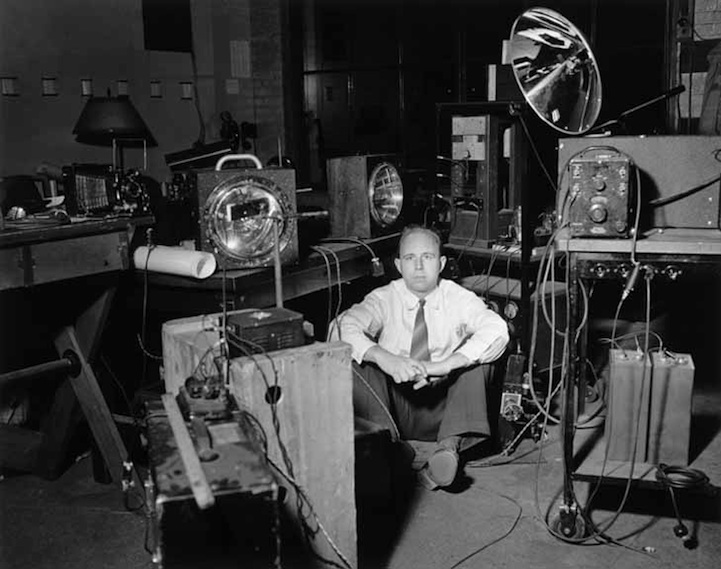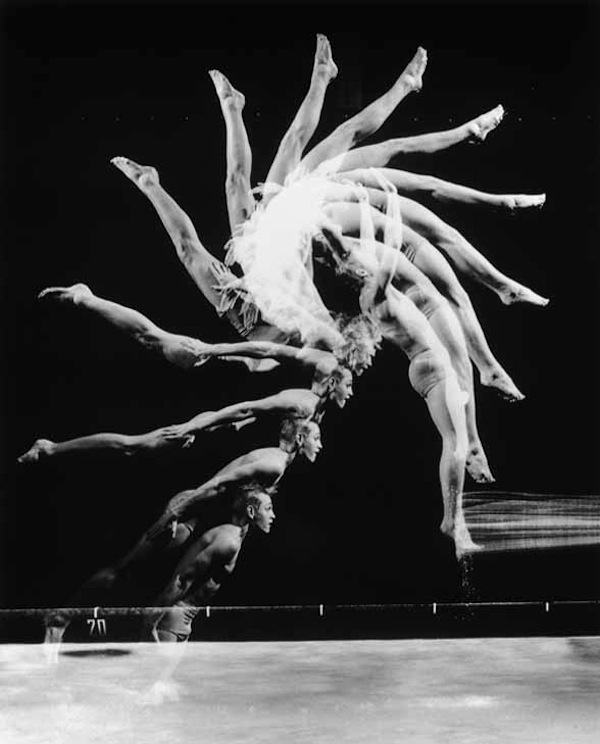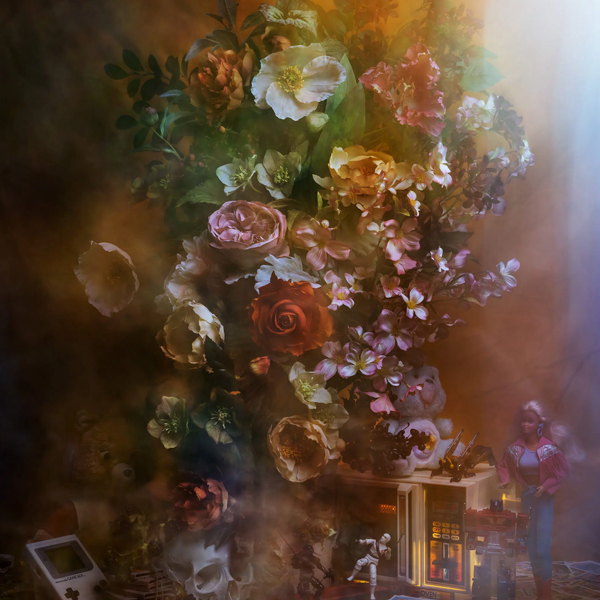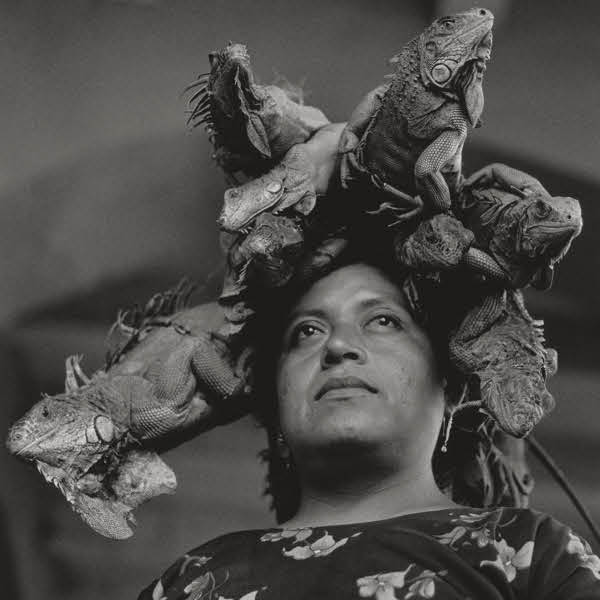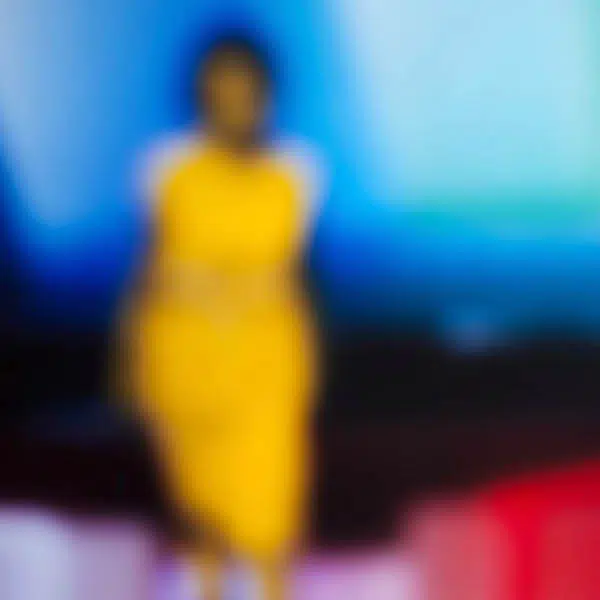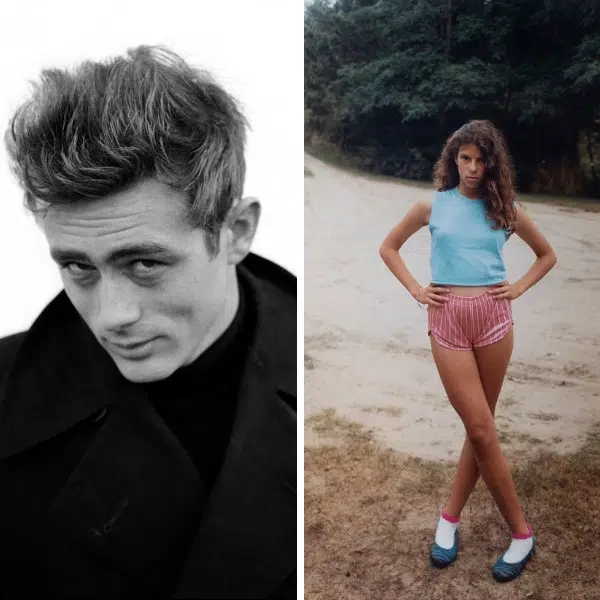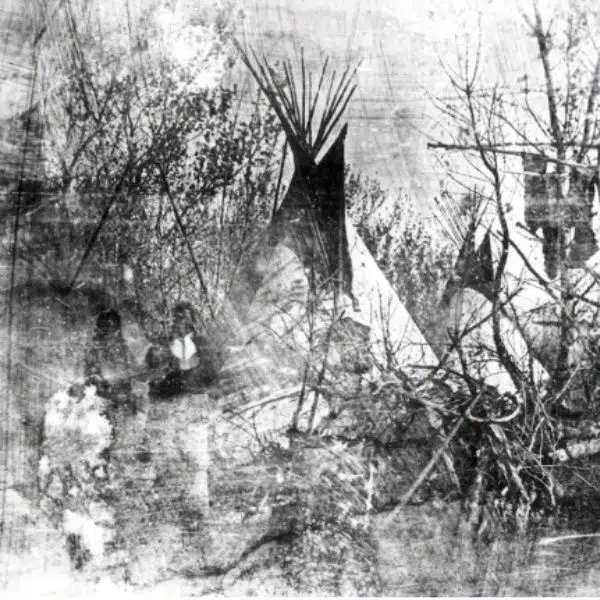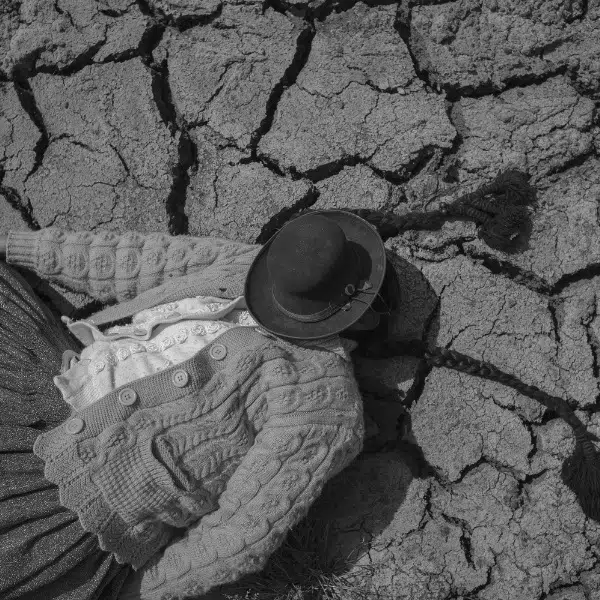Intrigued by what he could not see, Harold Edgerton made it his life's mission to analyze motion and extend our perception of time. He was an inventor as well as an MIT professor who was credited for taking the stroboscope from the lab to the forefront of our creative consciousness. Combining the stroboscopic process with the camera's flash, Edgerton was able to photograph an entire range of movement that previously could not be seen by the naked eye. Suddenly, the invisible became visible, and we were able to experience a milk drop's beautiful coronet, an amazing arc of a golf swing and a bullet's immense power as it cut through everything from playing cards to a fruit's core. The genius of it all is that Edgerton's photos engaged the public's imagination. He showed us how science, art and photography could intersect, leaving us with a new sense of reality. Most of all, though, he made the ordinary extraordinary, taking simple objects or movements and turning them into indescribable showcases of art. Golf Swing
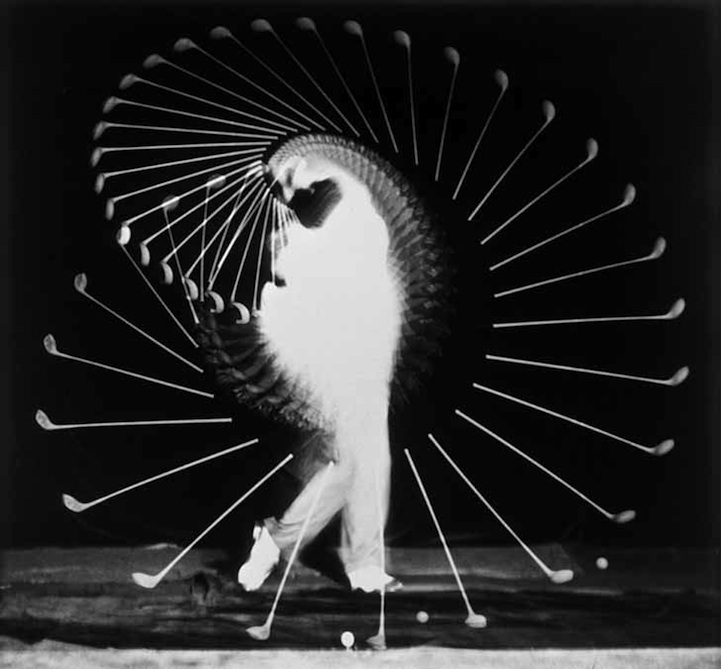
Tennis Serve
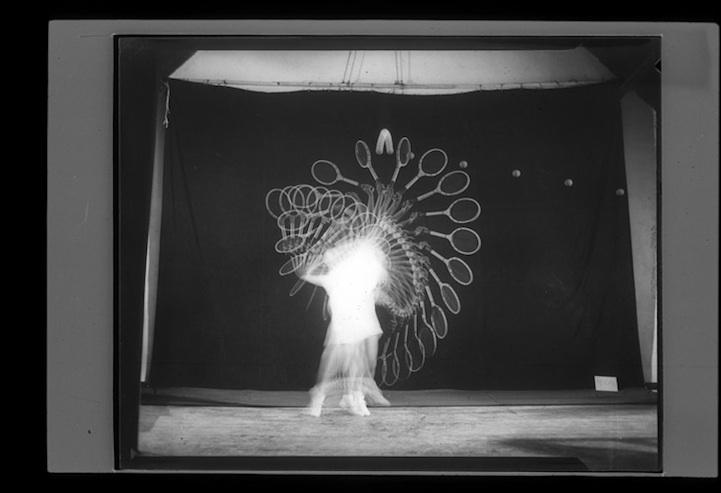
Pitcher
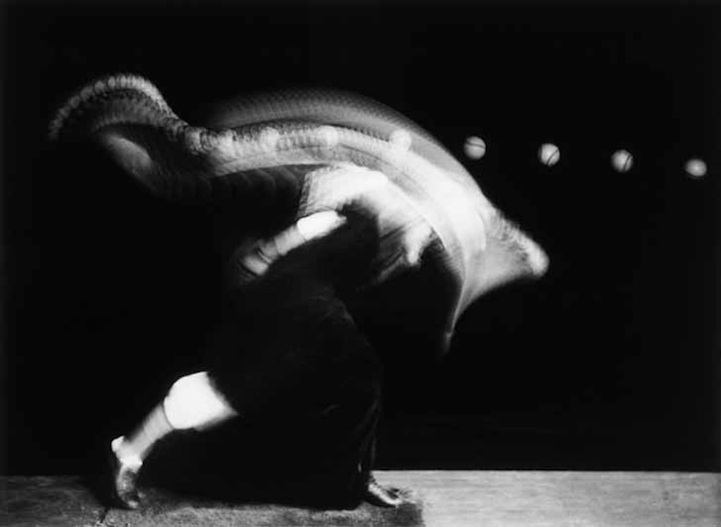
Fly Fisherman
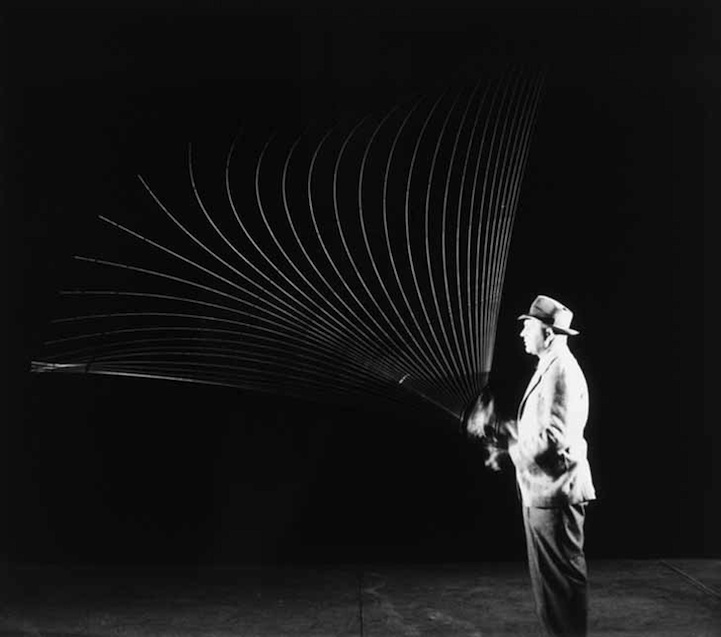
Crew
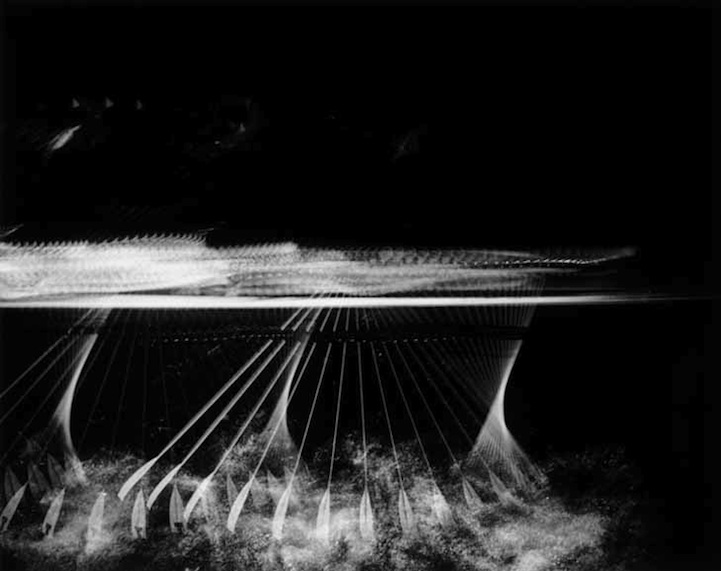
Dancer
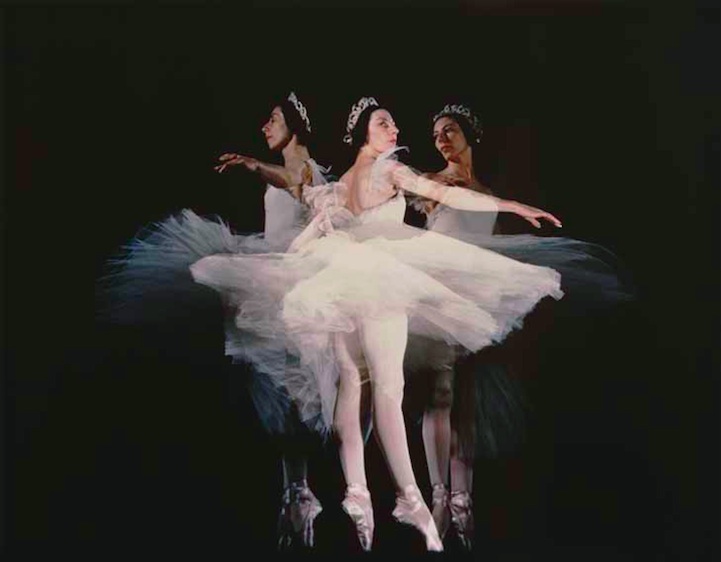
Moscow Circus Acrobats
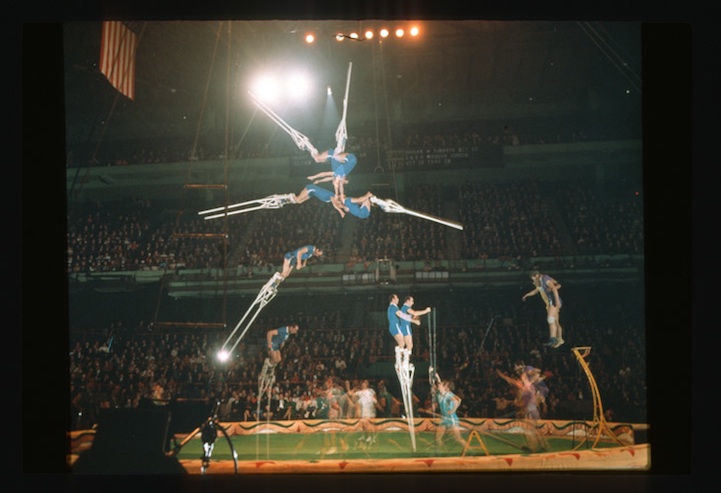
Moving Skip Rope
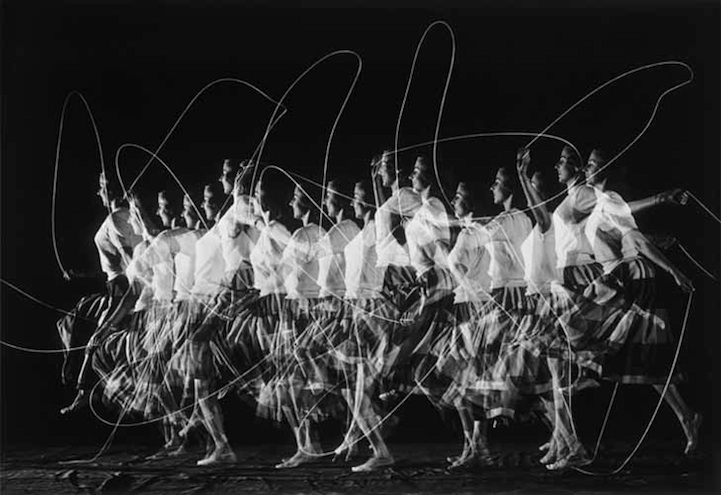
Antique Gun Firing
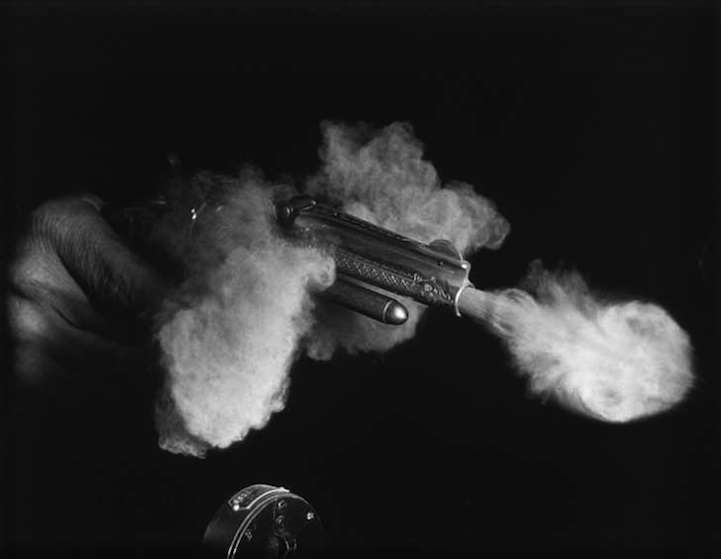
Wheel with Square
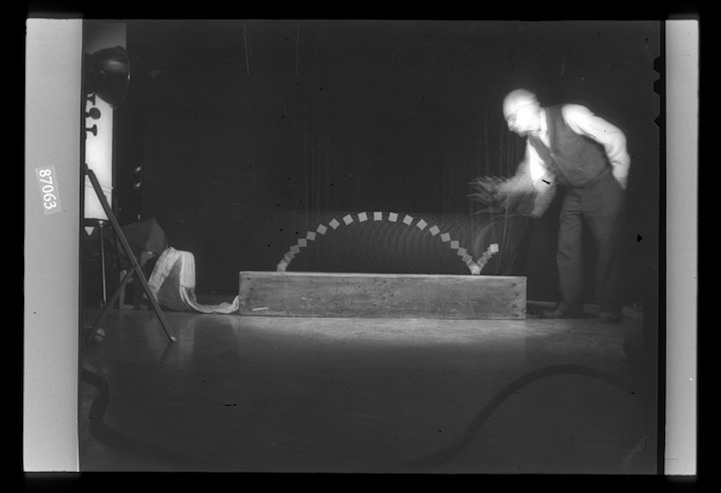
Coin Toss
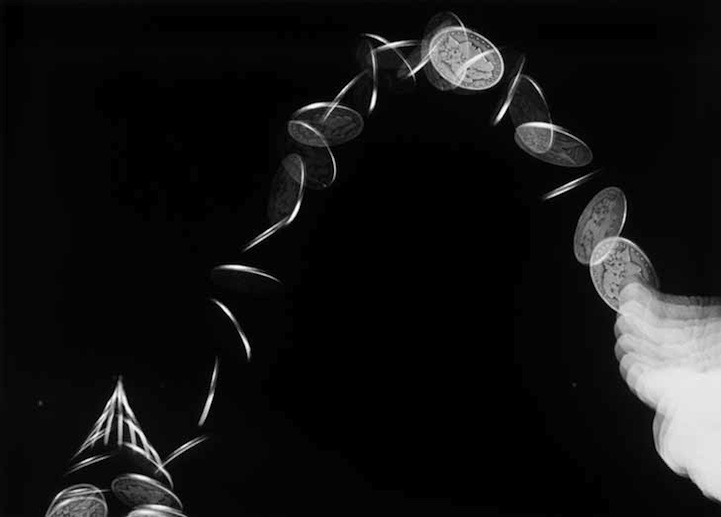
Fanning the Cards
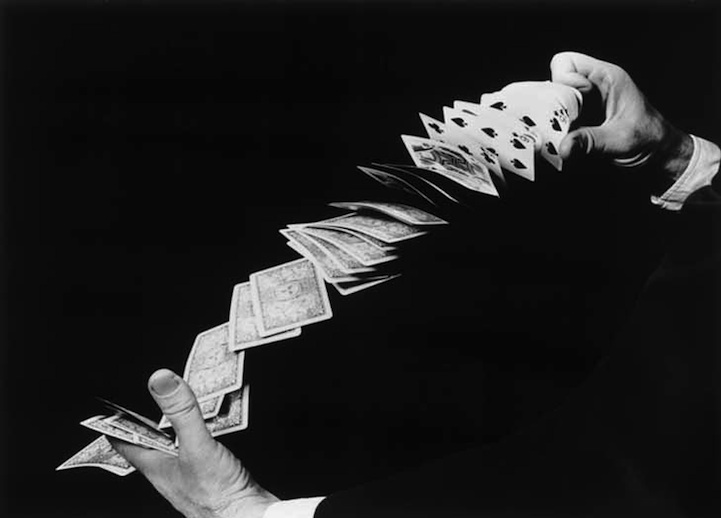
Cutting the Card Quickly
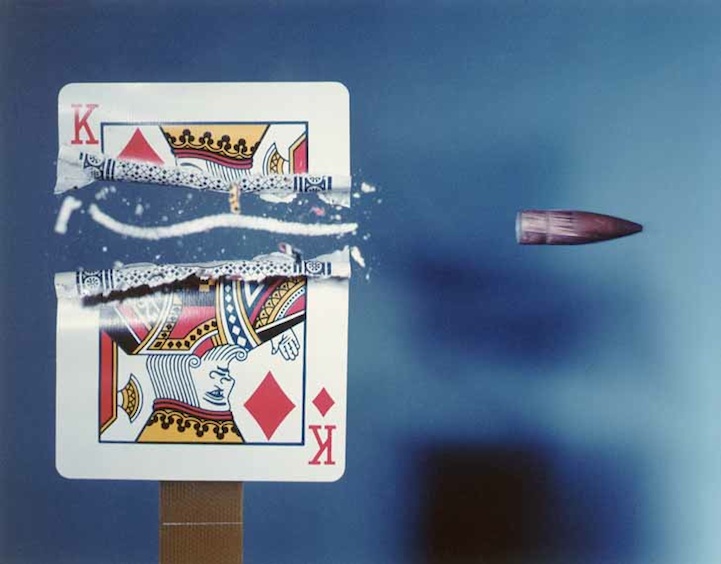
Death of a Lightbulb
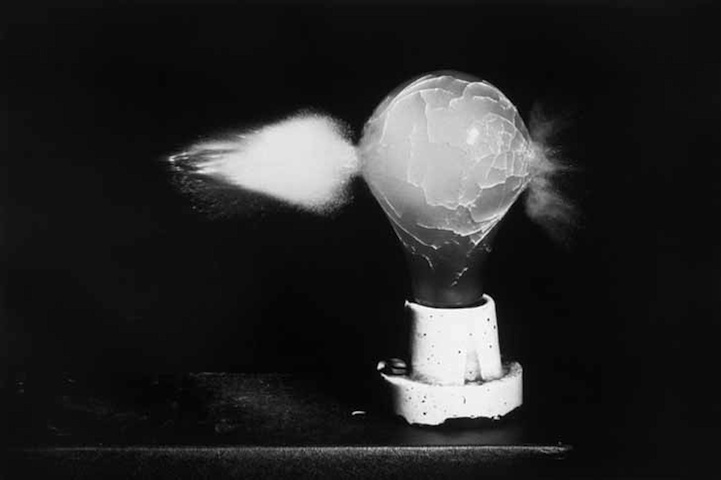
Bullet Through Three Balloons
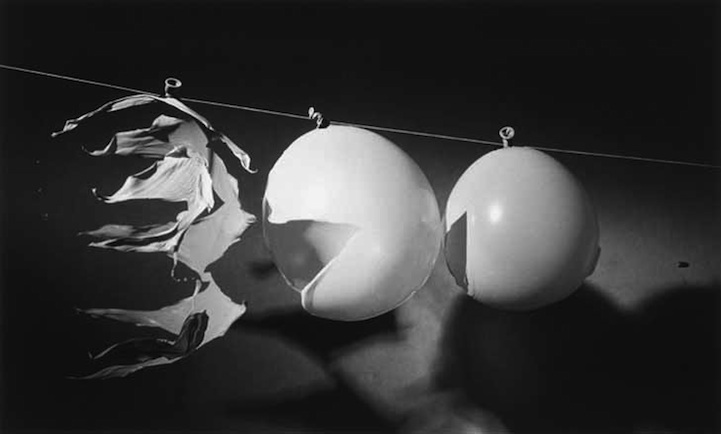
Bullet Through Apple 1
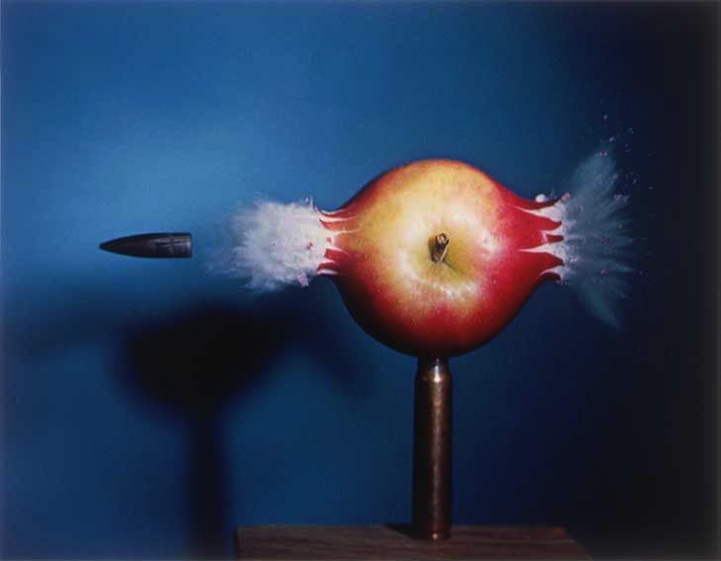
Bullet Through Apple 2
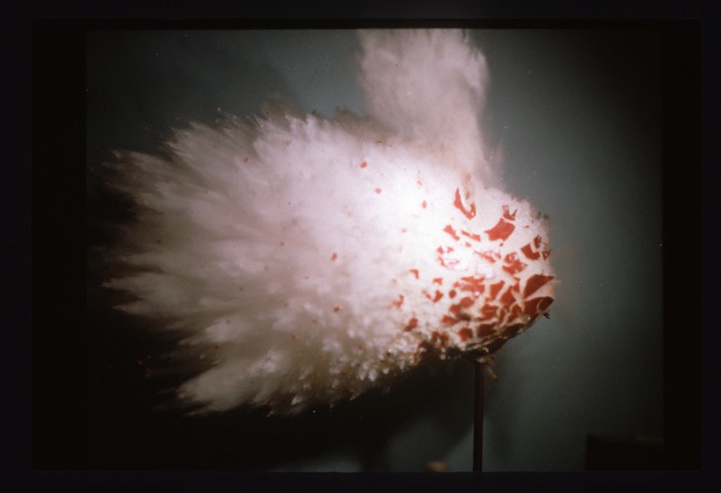
Milk Drop Coronet
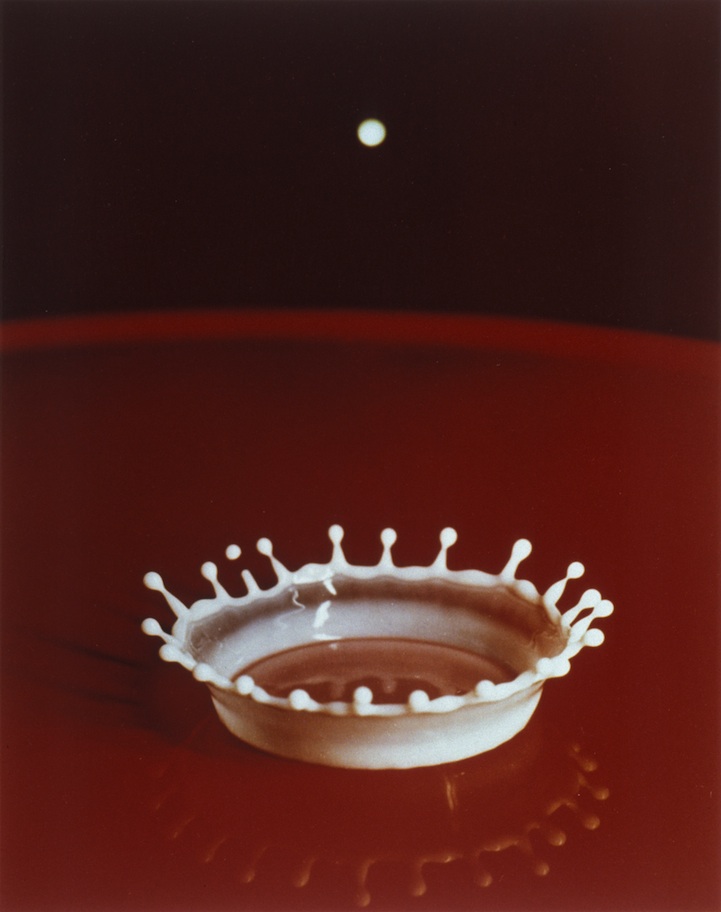
Edgerton in His Lab
